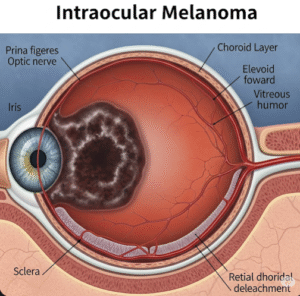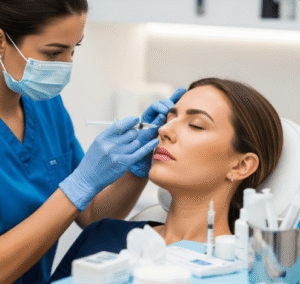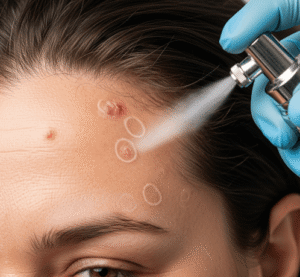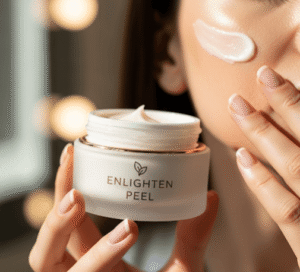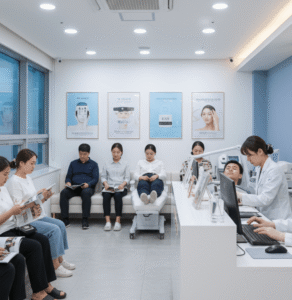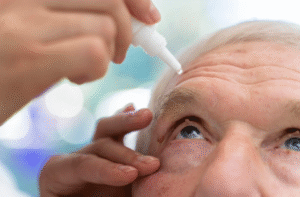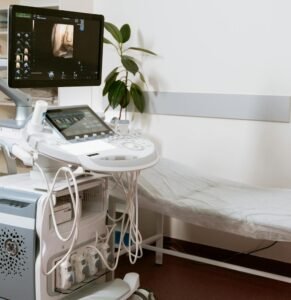What It Is
Earlobe repair is a cosmetic surgical procedure that restores the natural shape of torn, stretched, or damaged earlobes. It may involve repairing trauma-related splits, closing enlarged piercing holes, or correcting earlobes stretched from heavy earrings or gauges.
In Korea, earlobe repair is one of the most common minor cosmetic procedures. Surgeons specialize in fine, meticulous suturing techniques that leave minimal scarring, ensuring that the earlobe looks natural and can even be re-pierced later if desired.
Why It’s Done
Cosmetic Purposes:
- Repairs torn or split earlobes caused by earrings, accidents, or stretching
- Restores symmetry and balance between the two earlobes
- Enhances confidence by allowing patients to wear earrings again
- Provides a more youthful, neat ear appearance
Corrective Purposes:
- Closes enlarged piercing holes or stretched earlobes from gauges
- Corrects earlobe deformities from trauma, surgery, or congenital issues
Patient Considerations:
- Suitable for all ages, including teens and adults
- Popular among patients who want to restore a professional or refined look after years of ear stretching
- Best suited for healthy, non-smoking patients with realistic expectations
Alternatives
- Dermal Fillers: Can temporarily plump thin earlobes but do not repair tears or holes
- Laser or Skin Tightening: May improve minor earlobe wrinkling but not structural damage
- Camouflage: Covering stretched or torn earlobes with hair or accessories (temporary solution)
Preparation
Before earlobe repair in Korea, patients typically complete:
- Consultation: Examination of the earlobe and discussion of surgical goals
- Health Screening: General health check to confirm candidacy
- Pre-Op Instructions: Avoid smoking, alcohol, and blood-thinning medications for optimal healing
- Anesthesia Planning: Local anesthesia is usually sufficient; no fasting required unless combined with other procedures
How It’s Done
Type: Minor surgical procedure, outpatient basis
Duration: 30–60 minutes per ear
Procedure Steps:
- Local anesthesia is applied to numb the earlobe
- Edges of the tear or hole are trimmed to create clean margins
- The earlobe tissue is sutured with fine stitches to restore natural shape
- In cases of large defects, tissue rearrangement techniques may be used for contour correction
Hospitalization: Outpatient; patients return home immediately after the procedure
Recovery
- First Few Days: Mild swelling, redness, or tenderness at the repair site
- Stitches: Usually removed within 5–7 days (if not dissolvable)
- Downtime: Most patients resume daily activities immediately, with minor restrictions
- Scar Healing: Small scars fade over time and are often barely noticeable
- Re-Piercing: Typically allowed after 6–8 weeks once the tissue fully heals
Possible Complications
- Minor swelling and bruising (common and temporary)
- Infection (rare with proper aftercare and antibiotics)
- Asymmetry between earlobes
- Scar visibility (minimized with fine suturing and proper care)
- Rare recurrence of stretching if heavy earrings are worn again
Treatment Options in Korea
Diagnosis
Korean clinics use:
- Direct Physical Examination to assess tear size and tissue condition
- Photographic Documentation for before-and-after comparison
- Patient Consultation to plan repair technique and discuss re-piercing goals
Medical Treatments
For patients not ready for surgery:
- Dermal fillers for volume restoration in thin earlobes (cosmetic only)
- Non-surgical camouflage with makeup or accessories
Surgical or Advanced Therapies
- Standard Earlobe Repair: Simple closure of tears or enlarged piercings
- Complex Repair: For severely stretched or irregularly shaped earlobes
- Earlobe Reduction: For patients who want smaller, neater earlobes in addition to repair
- Revision Surgery: Correcting previous unsatisfactory earlobe repairs
Rehabilitation and Support
- Follow-up appointments for suture removal and healing checks
- Scar care therapies such as silicone gel, ointments, or laser available in many Korean clinics
- International patient services: translation, concierge recovery support, and long-term follow-up


